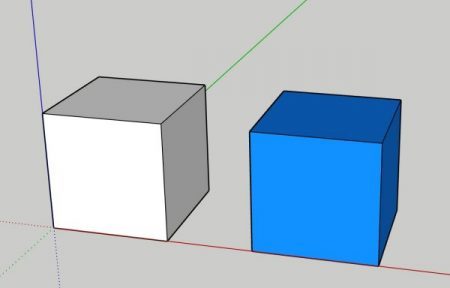Get Tech Tips
Subscribe to free tech tips.
What is a Suction Accumulator?

Suction Accumulators
A suction accumulator is used to prevent liquid refrigerant floodback to the compressor. A compressor is designed to move vapor refrigerant, NOT liquid, and the accumulator can really help us win that battle.
Accumulators are commonly used on heat pumps, transportation refrigeration systems, low-temp supermarket systems, and any place where liquid refrigerant flooding back to the compressor is likely.
The accumulator is installed in the suction line close to the compressor.
It usually is a vertical container with top connections. An internal U-tube reaching down near the bottom is installed on the accumulator outlet connection so that the inlet tube is near the top of the container. It allows the accumulator to be almost full before a floodback can occur if the accumulator is sized correctly.
A small hole is drilled in the U-tube near its lowest point. This hole allows a controlled meter of any liquid refrigerant or oil back to the compressor with a siphoning action. That hole is generally covered in a screen to keep the hole from plugging and preventing oil return. Accumulators need to be kept clean and free of debris, or that screen at the bottom of the U-bend can potentially block as well, which is why the accumulator should be emptied and flushed when a system has a significant burnout or another type of contamination event.
To work best, it is sometimes advisable to have a heat source on the vessel to assist in evaporating the liquid refrigerant. This may be an electric heat tape or pad. Some accumulators have connections so that a liquid line loop can be piped into the bottom of the accumulator. This improves the system's performance by subcooling the liquid refrigerant and protects the compressor against liquid slugging by providing additional superheat to the suction gas.
—Louie Molenda










Comments
thanks, great information.
is there like a role for at what suction, ambient temperature is recommended to install suction accumulators?
thanks
thanks, great information.
is there like a role for at what suction, ambient temperature is recommended to install suction accumulators?
thanks
The Aviator Game merges air travel with high stakes.
Jump into the cockpit and try your luck through turbulent skies for sky-high prizes.
With its classic-inspired graphics, the game evokes the spirit of aircraft legends.
https://www.linkedin.com/posts/robin-kh-150138202_aviator-game-download-activity-7295792143506321408-81HD/
Watch as the plane takes off – withdraw before it flies away to grab your winnings.
Featuring seamless gameplay and realistic audio design, it’s a top choice for slot enthusiasts.
Whether you’re testing luck, Aviator delivers uninterrupted thrills with every spin.
The Aviator Game merges air travel with high stakes.
Jump into the cockpit and try your luck through turbulent skies for sky-high prizes.
With its classic-inspired graphics, the game evokes the spirit of aircraft legends.
https://www.linkedin.com/posts/robin-kh-150138202_aviator-game-download-activity-7295792143506321408-81HD/
Watch as the plane takes off – withdraw before it flies away to grab your winnings.
Featuring seamless gameplay and realistic audio design, it’s a top choice for slot enthusiasts.
Whether you’re testing luck, Aviator delivers uninterrupted thrills with every spin.
Good day! I could have sworn I’ve been to this blog before but after checking through some of the post I realized it’s new to me. Anyhow, I’m definitely glad I found it and I’ll be book-marking and checking back frequently!
Good day! I could have sworn I’ve been to this blog before but after checking through some of the post I realized it’s new to me. Anyhow, I’m definitely glad I found it and I’ll be book-marking and checking back frequently!
Этот сайт — официальная страница профессионального расследовательской службы.
Мы предоставляем услуги в решении деликатных ситуаций.
Группа детективов работает с максимальной этичностью.
Нам доверяют проверку фактов и выявление рисков.
Детективное агентство
Любой запрос обрабатывается персонально.
Мы используем эффективные инструменты и работаем строго в рамках закона.
Если вы ищете реальную помощь — добро пожаловать.
Этот сайт — официальная страница профессионального расследовательской службы.
Мы предоставляем услуги в решении деликатных ситуаций.
Группа детективов работает с максимальной этичностью.
Нам доверяют проверку фактов и выявление рисков.
Детективное агентство
Любой запрос обрабатывается персонально.
Мы используем эффективные инструменты и работаем строго в рамках закона.
Если вы ищете реальную помощь — добро пожаловать.
To leave a comment, you need to log in.
Log In